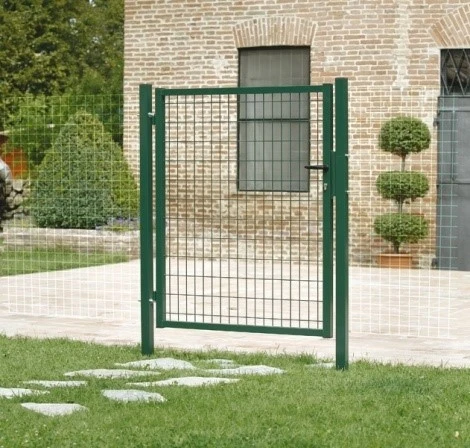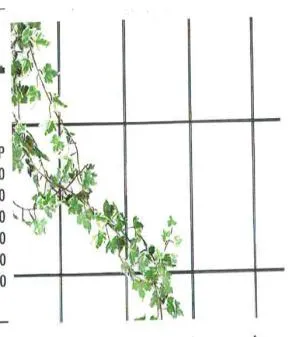-
Email:zhao@hyliec.cn
-
Tel:+86 311 85273988
-
WhatsAPP:8613931128750
-
 Afrikaans
Afrikaans -
 Albanian
Albanian -
 Amharic
Amharic -
 Arabic
Arabic -
 Armenian
Armenian -
 Azerbaijani
Azerbaijani -
 Basque
Basque -
 Belarusian
Belarusian -
 Bengali
Bengali -
 Bosnian
Bosnian -
 Bulgarian
Bulgarian -
 Catalan
Catalan -
 Cebuano
Cebuano -
 Corsican
Corsican -
 Croatian
Croatian -
 Czech
Czech -
 Danish
Danish -
 Dutch
Dutch -
 English
English -
 Esperanto
Esperanto -
 Estonian
Estonian -
 Finnish
Finnish -
 French
French -
 Frisian
Frisian -
 Galician
Galician -
 Georgian
Georgian -
 German
German -
 Greek
Greek -
 Gujarati
Gujarati -
 Haitian Creole
Haitian Creole -
 hausa
hausa -
 hawaiian
hawaiian -
 Hebrew
Hebrew -
 Hindi
Hindi -
 Miao
Miao -
 Hungarian
Hungarian -
 Icelandic
Icelandic -
 igbo
igbo -
 Indonesian
Indonesian -
 irish
irish -
 Italian
Italian -
 Japanese
Japanese -
 Javanese
Javanese -
 Kannada
Kannada -
 kazakh
kazakh -
 Khmer
Khmer -
 Rwandese
Rwandese -
 Korean
Korean -
 Kurdish
Kurdish -
 Kyrgyz
Kyrgyz -
 Lao
Lao -
 Latin
Latin -
 Latvian
Latvian -
 Lithuanian
Lithuanian -
 Luxembourgish
Luxembourgish -
 Macedonian
Macedonian -
 Malgashi
Malgashi -
 Malay
Malay -
 Malayalam
Malayalam -
 Maltese
Maltese -
 Maori
Maori -
 Marathi
Marathi -
 Mongolian
Mongolian -
 Myanmar
Myanmar -
 Nepali
Nepali -
 Norwegian
Norwegian -
 Norwegian
Norwegian -
 Occitan
Occitan -
 Pashto
Pashto -
 Persian
Persian -
 Polish
Polish -
 Portuguese
Portuguese -
 Punjabi
Punjabi -
 Romanian
Romanian -
 Russian
Russian -
 Samoan
Samoan -
 Scottish Gaelic
Scottish Gaelic -
 Serbian
Serbian -
 Sesotho
Sesotho -
 Shona
Shona -
 Sindhi
Sindhi -
 Sinhala
Sinhala -
 Slovak
Slovak -
 Slovenian
Slovenian -
 Somali
Somali -
 Spanish
Spanish -
 Sundanese
Sundanese -
 Swahili
Swahili -
 Swedish
Swedish -
 Tagalog
Tagalog -
 Tajik
Tajik -
 Tamil
Tamil -
 Tatar
Tatar -
 Telugu
Telugu -
 Thai
Thai -
 Turkish
Turkish -
 Turkmen
Turkmen -
 Ukrainian
Ukrainian -
 Urdu
Urdu -
 Uighur
Uighur -
 Uzbek
Uzbek -
 Vietnamese
Vietnamese -
 Welsh
Welsh -
 Bantu
Bantu -
 Yiddish
Yiddish -
 Yoruba
Yoruba -
 Zulu
Zulu
Long Chain Link Gates Durable, Secure & Customizable Fencing Solutions
- Explaining how heavy-duty fencing impacts infrastructure security
- Technical breakthroughs in reinforced steel gate engineering
- Market comparison of top industrial gate manufacturers
- Custom configuration options for specialized installations
- Case studies demonstrating performance in extreme conditions
- Integration techniques with complementary security systems
- Future developments in perimeter security infrastructure

(long chain link gate)
Long Chain Link Gate Solutions for Critical Infrastructure Security
Industrial facilities handling volatile materials require perimeter security that withstands both forced entry attempts and environmental stressors. Reinforced chain link gates form the first defensive layer at power plants, chemical storage sites, and transportation hubs. Current market analysis reveals a 27% increase in demand for Tier-4 security barriers since 2022, driven by updated DHS safety mandates.
Performance Under Extreme Conditions
Manufacturers now integrate galvanized steel alloys with carbon fiber reinforcement, increasing structural tolerance up to 14,000 psi pressure ratings. These gates undergo rigorous testing cycles including:
- 3,000-hour salt spray corrosion resistance validation
- Impact resistance testing against 7-ton force vectors
- Temperature endurance from -40°F to 120°F operational thresholds
Field data shows these enhanced materials reduce maintenance costs by 38% compared to conventional fencing systems.
Industrial Gate Manufacturers Comparison
| Specification | ArmorFence Pro | SteelGuard HD | FortisBarrier |
|---|---|---|---|
| Frame thickness | 7-gauge steel | 9-gauge steel | 5-gauge reinforced |
| Mesh density | 2.5" diamond pattern | 2.25" hex pattern | 1.875" security weave |
| Cycles before hinge failure | 135,000+ | 89,000 | 210,000+ |
| Custom sizing options | Up to 26ft width | Up to 22ft width | Up to 40ft width |
Specialized Installation Requirements
Mining operations in Australia's Pilbara region required cantilevered configurations to handle 150km/h dust storms. Engineers developed a three-stage solution:
- Concrete foundations with seismic anchors reaching 18ft depth
- Interlocking mesh panels with triple-welded joints
- Hydraulic automation systems rated for particulate ingress protection
Installation teams utilized long pliers specifically designed for tensioning thick-gauge mesh without compromising galvanization.
Proven Effectiveness in High-Risk Facilities
A Texas oil refinery documented a 91% reduction in perimeter breaches after installing reinforced chain link fence gates with these features:
- Anti-climb curvature at 60-degree angles
- Vibration sensors integrated into gateposts
- Double-locking mechanisms requiring sequential disengagement
During Hurricane Laura, these installations maintained structural integrity despite 12-foot storm surges, preventing hazardous material containment breaches.
Integrated Security Ecosystems
Modern perimeter systems incorporate laser alignment during installation, ensuring gaps never exceed 1/8". This precision allows integration with:
- Microwave motion detection arrays
- Automated response lighting systems
- Biometric access control interfaces
Connection points utilize military-grade stainless steel fasteners that require specialized long pliers for service access, preventing unauthorized disassembly.
Advancing Long Chain Link Gate Technology for Future Security
New prototypes undergoing ISO certification feature piezoelectric mesh that generates alarm-triggering voltages during tampering attempts. Composite materials research promises to increase durability by 200% while reducing weight. Continuous monitoring systems now feed data into AI platforms that predict maintenance needs with 94% accuracy, creating self-diagnosing perimeter security infrastructures.

(long chain link gate)
FAQS on long chain link gate
Q: What materials are used in long chain link gates?
A: Long chain link gates are typically made from galvanized steel or aluminum for durability. The mesh is woven into a diamond pattern, and frames often include reinforced edges. These materials resist rust and withstand outdoor conditions.
Q: How do I install a long chain link fence gate?
A: Secure the gate posts in concrete footings for stability. Attach hinges to the post and align the gate with adjustable tension rods. Use a latch system that matches the gate height for secure closure.
Q: Can long pliers help repair chain link fencing?
A: Yes, long pliers like fencing tools grip and twist wire ties efficiently. Their extended handles provide leverage for tightening or cutting mesh. They’re ideal for adjusting tension wires on chain link gates.
Q: What sizes do long chain link fence gates come in?
A: Standard widths range from 3-12 feet, with heights matching fence panels (4-6 feet). Custom sizes are available for industrial applications. Ensure posts are 2-3 inches taller than the gate for proper clearance.
Q: How to maintain a long chain link gate’s functionality?
A: Lubricate hinges and latches annually to prevent squeaking. Inspect for loose mesh links or bent frames seasonally. Use rust-resistant spray paint on damaged areas to extend lifespan.
-
Secure Your Space with Double Wire Mesh Fences
NewsJun.20,2025
-
Modern and Stylish 3D Fencing Solutions
NewsJun.20,2025
-
Enhance Your Garden with Beautiful Border Fences
NewsJun.20,2025
-
Enhance Security with High-Quality Fencing Solutions
NewsJun.20,2025
-
Elevate Your Space with Elegant Fencing Solutions
NewsJun.20,2025
-
Durable and Secure Fencing Solutions
NewsJun.20,2025
